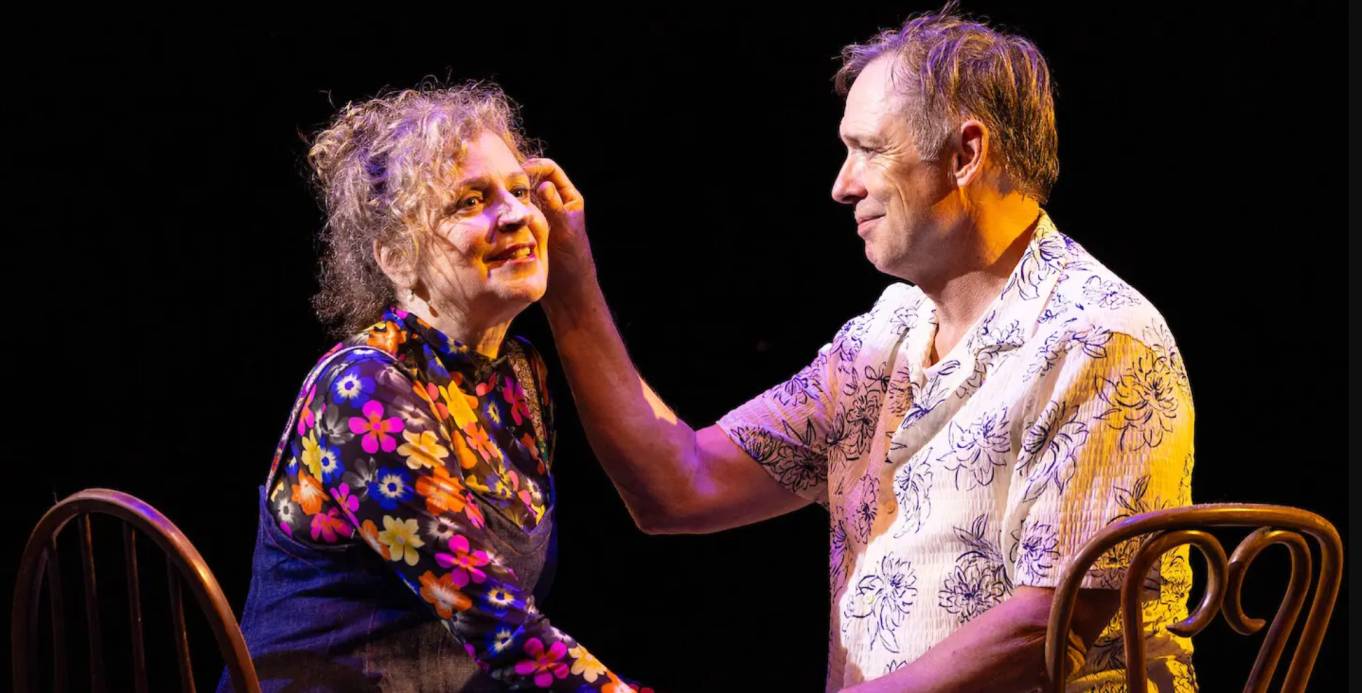‘Romeo & Juliet’ Review: Older, Gentler Star-Crossed Lovers
With age-blind casting at the Hudson Valley Shakespeare Festival, two actors who have been married for 38 years play the teenage leads.
GARRISON, N.Y. — A romance and a love story are two different things. In art, we’re not great at differentiating.
Take “Romeo and Juliet,” a corpse-ridden romantic tragedy routinely mistaken for a tale of deepest love, even though the lovers are teenagers who’ve only just met — people who, despite their ferocious infatuation, would absolutely flunk a quiz about each other’s likes and dislikes, dreams and histories.
They’re passionate, sure; isn’t everyone at that age? But the rash young people in “Romeo and Juliet,” both the title characters and some of their friends, die from their own impetuosity. They’re not old enough to know better than to kill one another in anger in the street, or agree to a harebrained plan that involves faking one’s own death and being interred in a real tomb.
Gaye Taylor Upchurch’s staging — which opened on Friday night at the Hudson Valley Shakespeare Festival’s new 98-acre riverside site, under the canopy of its familiar tent — presents the tragedy as a love story, with a twist. Romeo and Juliet are played by festival regulars Kurt Rhoads and Nance Williamson, actors who have been married for 38 years and done 68 previous shows together. Upon which background, apparently, the central idea of this production mistakenly depends.
“With Kurt and Nance in the title roles,” Upchurch writes in a program note, using an ampersand as her production’s title does, “we get to take it for granted that Romeo & Juliet truly love each other.”
Even if we could, and I don’t believe we can, that assumption wouldn’t be terribly helpful to a drama that’s driven by the urgency of fresh desire yet played here with the languor of long acquaintance, as if guided by Friar Laurence’s admonition to “love moderately.” And so the sparking attraction between Romeo and Juliet ignites not a raging conflagration but a glowing ember — warmth, not heat.
The fault isn’t in the chronologically incongruous casting; audiences are sophisticated enough not to bat an eye at the actors’ ages. And in a summer when Ian McKellen is returning again to the title role in “Hamlet,” which he last played onstage a year ago, at 82, other well-seasoned actors might also want to take their shots at interpreting Shakespearean youths.
Upchurch’s elegant interspersing of ethereal choral music by Heather Christian is one of this production’s most alluring features, along with costumes in eye-popping patterns by Enver Chakartash. But Upchurch hasn’t built a frame or puzzled out a conceit that supports her age-blind casting. The idea feels forced, not organic — grasping for meaning rather than providing it
Romeo and Juliet, adolescents still under their parents’ roofs, take drastic measures to wrest control of their lives and futures. But the even-keeled Rhoads and Williamson imbue these teens with none of the tidal-wave emotions that make them idealistic enough to defy their families’ hatred for one another, and heedless enough not to pause for rational thought.
Without that palpable, desperate, cocktail-of-hormones recklessness, their actions make no sense. And if we don’t believe the characters, the play loses its stakes and its heft. As when Lady Capulet (a solid Britney Nicole Simpson) urges the almost 14-year-old Juliet to marry her suitor Paris, saying: “I was your mother much upon these years that you are now a maid.” There’s gut-punch potential in that line about girls and imposed maternity, but in the context of this wan production, it merely evaporates.
Paris (Erin Despanie), though, is interesting: unusually affable, and thus uncommonly sympathetic. You feel a little bad for the guy as he innocently looks forward to his wedding. And if Kimberly Chatterjee’s appealing Friar Laurence doesn’t manage to reconcile his own honorable objective — ending the antagonism between the Capulets and the Montagues — with his deranged death-faking scheme, he is nonetheless one of the more fully inhabited characters.
The tent in which this all plays out, with little more than chairs for a set, is a temporary structure nestled at the foot of a sloping hill. It’s due to be replaced nearby with a permanent open-air theater designed by Studio Gang, with Hudson River views — the sort of vista that festival goers enjoyed for decades at Hudson Valley Shakespeare’s former longtime home, on the grounds of the neighboring Boscobel House and Gardens.
That backdrop is gone for now, but the customary soft sand stage floor is in place, to be traipsed across by spectators on the way to their seats. Also comfortingly unchanged: the dexterous use of the landscape outside the tent as a playing space. After mortally wounding Romeo’s friend Mercutio (Luis Quintero), Juliet’s cousin Tybalt (Zoë Goslin) runs off to the hill, where, in dramatic side lighting (by Stacey Derosier), he surveys the damage from a distance. Upchurch does well with such tableaus.
Covid-19 cases in the company delayed the opening night of this “Romeo & Juliet.” Even when it arrived, two actors wore face masks onstage. It’s impossible to know how much the disruption of illness might have foiled the depth of characterization in this production.
But more time would not have alchemized the central elements that refuse to meld: the onstage fiction of Romeo and Juliet’s ruinous romance, and the offstage reality of two veteran actors’ devoted love.
Romeo & Juliet
Source: NY Times



